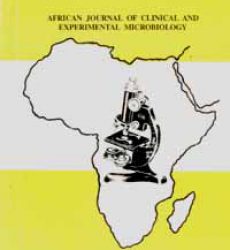A measured Escherichia coli level in drinking water is perhaps the most popular means of determining human health risks globally. Water samples from wells, boreholes and sachet water, the 3 predominant sources of drinking water in the study area were evaluated for the presence of bacteria, particularly E coli. Bacteria isolation was done using standard microbiological procedures while identification of isolates was done using cultural, morphological and biochemical characteristics. Enumeration of standard plate count was done by spread plate method on serially diluted water samples. The prevalence of E coli in the water samples and the activities of cefoxitin, fusidic acid, meticillin, penicillin and vancomycin against the E coli isolates and the susceptibility testing data were obtained using Kirby Bauer method. A total of six bacteria species Escherichia coli, Pseudomonas aeruginosa, Bacillus cereus, Klebsiella pneumonia, Staphylococcus aureus, Enterobacter aerogenes were isolated from water samples obtained from borehole, well and sachet water samples in the study area. The mean bacteria counts ranged between 3.74 x 104 to 1.65 x 102 CFU/ml for well and borehole water and 0.81 to 5.1 x 102 CFU/ml for sachet water samples. Out of the 6 E coli strains representing 27.2% of the isolated bacteria species; two, representing 33.3% of the strains
showed moderate to high resistance against meticillin. These findings are expected to motivate public health stakeholders in the study location to attempt reducing the growing resistance of pathogenic bacteria in the environment, and their ecotoxic effects.
Key words: antibiotic resistance, meticillin, water quality, E. coli
Un niveau d’Escherichia coli mesurées dans l’eau potable est peut-être le moyen le plus populaire de la détermination des risques pour la santé humaine à l’échelle mondiale. Des échantillons d’eau de puits, de forages et de l’eau de sachet, les trois principales sources d’eau potable dans la zone d’étude ont été évalués pour la présence de bactéries, en particulier E. coli. L’isolement de bactéries a été effectué en utilisant des procédures microbiologiques standard tandis que l’identification des isolats a été effectuée à l’aide des caractéristiques culturelles, morphologiques et biochimiques. Énumération de nombre de plaque standard a été effectuée par la méthode de la plaque de propagation sur des échantillons d’eau dilués en série. La prévalence de E. coli dans les échantillons d’eau et les activités de la céfoxitine, l’acide fusidique, la méticilline, la pénicilline et
de la vancomycine contre les isolats de E. coli et les données de tests de sensibilité ont été obtenus en utilisant la méthode de Kirby Bauer. Un total de six espèces de bactéries :Escherichia coli, Pseudomonas aeruginosa, Bacillus cereus, Klebsiella pneumoniae, Staphylococcus aureus, Enterobacter aerogenes ont été isolés à partir d’échantillons d’eau provenant de puits, de forage et des échantillons d’eau de sachet dans la zone d’étude. Les bactéries, les valeurs moyennes se situaient entre 3,74 x 104 à 1,65 x 102 UFC / ml pour le bien et l’eau de forage et de 0,81 à 5,1 x 102 UFC / ml pour les échantillons d’eau de sachet. Sur les 6 souches d’E.coli représentant 27,2% des espèces de bactéries isolées ; deux (33,3 %) des souches ont montré une résistance modéré à haute à la pénicilline. Ces résultats devraient inciter les intervenants en santé publique dans le lieu de l’étude de tenter de réduire la résistance croissante des bactéries pathogènes dans l’environnement et leurs effets écotoxiques.
Mots clés: Résistance aux antibiotiques, pénicilline, qualité l’eau, E. coli.
Download full journal in PDF below
Prevalence of Antibiotic-Resistant Strains of Escherichia coli in Drinking Water Samples from Mowe Metropolis, Ogun State, Nigeria

